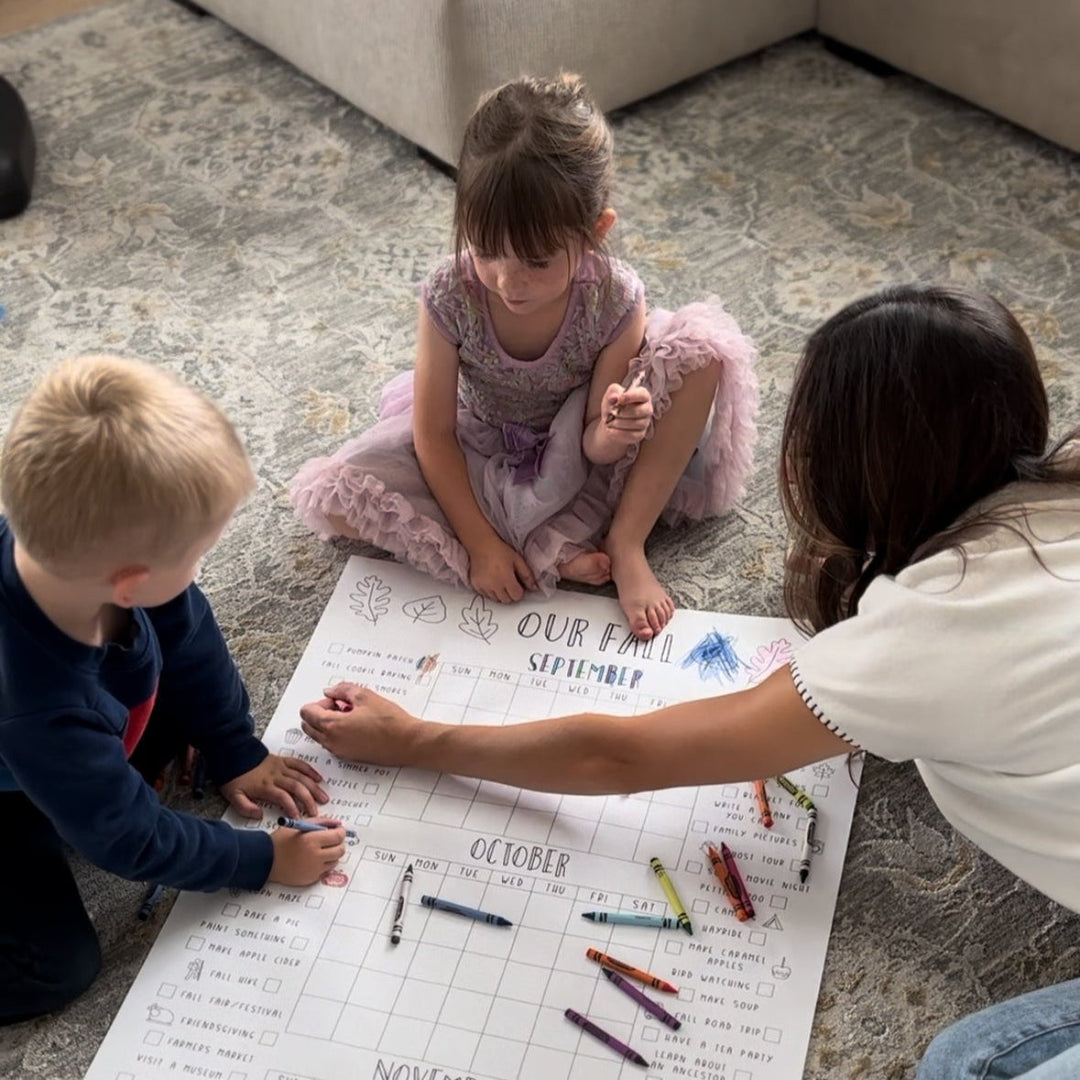Introducing Chore Charts into your Family
How to Introduce a Chore Chart System into Your Family
Creating a chore chart system is a game-changer for family organization, teaching responsibility, and reducing household stress. It helps balance the sharing the workload of the home - because mom shouldn't be juggling it all. So whether you’re introducing chores to a toddler or a teen, a well-planned system makes this process smoother and more effective. Here’s how to get started and ensure long-term success!
Why Use a Chore Chart?
A chore chart helps:
- Set clear expectations for every family member.
- Teach responsibility and life skills.
- Reduce nagging and arguments about chores.
- Create a fair division of household tasks.
- Foster teamwork and accountability.
Step-by-Step Guide to Implementing a Chore Chart
1. Choose the Right Type of Chore Chart
There are many chore chart styles to fit your family’s needs:
- Magnetic boards for the fridge – Perfect for teens since it's at their fav spot: the fridge. Keeps things easily top of mind.
- Framed dry-erase chore charts – I recommend these if you have more than 2 kiddos or don't have the fridge space. Having a visually appealing chore chart systems enables you to be able to put it in a front and center area of the home so it keeps it top of mind for everyone - but won't clash with your home decor.
- Toddler / Visual Chore Charts - these boards are perfect for early readers and for hands still learning fine-motor skills.
- Using Chore Stickies with your Boards - this is perfect for early readers and for easily swapping chores between kids each week. The stars also just make it more fun to complete chores instead of just a check mark!
2. Assign Age-Appropriate Chores
Matching chores to your child’s age ensures success. I have a blog post that goes further into this if you want more ideas:
- Toddlers (Ages 2-4) – Put away toys, wipe spills, place clothes in a hamper.
- Kids (Ages 5-9) – Set the table, feed pets, sweep, make the bed.
- Preteens (Ages 10-12) – Take out the trash, load/unload the dishwasher, fold laundry.
- Teens (Ages 13+) – Cook simple meals, mow the lawn, do laundry, clean the bathroom.
3. Introducing Your Chore Chart System in an Effective Way
This is probably the single most important part of establishing a chore routine. Instead of having the children sit and listen to you...ask questions instead. Ask "Why do you think chores matter? How do they help our family? What happens if no one does chores"...have a discussion, not a lesson. Of course, you're part of that discussion as well and you can say why chores matter. The key to this is to make this all a team effort - even down to the discussion itself. Ask what chores need to be done - create a list together as a family (they'll obviously forget some, so you can say "Oh and I'm going to add these too because they're important") When you have the finished list - divvy them up as a family. Have the kids maybe take turns picking which ones they do...or make it into a game where if they roll a dice and get a 3 they get "mop the floor", etc. During the discussion ask "What should we do if someone doesn't do their chores?" and "What should we do if someone does all their chores?". If they suggestions are way out of the ballpark or not enough...give feedback in a kind way "I don't know if that works, do you have other ideas? Or what do you think about this idea (then give your idea). The more choices and involvement you give them, the more success you'll have. Some major key points:
- I use a point system so they can turn in points for rewards.(rewards like: stickers for young kids, extra privileges for older kids, maybe actual dollar amounts).
- Include yourself and your partner with some tasks and check them off! Working alongside them helps model proper techniques.
Tips for Introducing Chores to Different Age Groups
Toddlers & Young Kids
- Keep tasks short and simple.
- Use pictures instead of words on their chart.
- Offer lots of praise and encouragement.
- Make chores feel like playtime (e.g., racing to clean up toys).
Tweens & Teens
- Give them more independence in choosing chores.
- Link responsibilities to real-life rewards (e.g., screen time, allowance, outings).
- Use a checklist format to keep them accountable.
- Allow flexibility but set deadlines to complete tasks.
Consistency is Key
For a chore chart system to work, consistency is crucial:
- Hold weekly family check-ins to review progress.
- Rotate chores to keep things fair and interesting.
- Stay patient and adjust if a system isn’t working.
A chore chart system helps instill responsibility, teamwork, and independence in kids of all ages. By choosing age-appropriate chores, introducing tasks positively, and staying consistent, you can create a system that works for your family.
Are you ready to start a chore chart? Let us know what strategies work best for your family in the comments!




Leave a comment